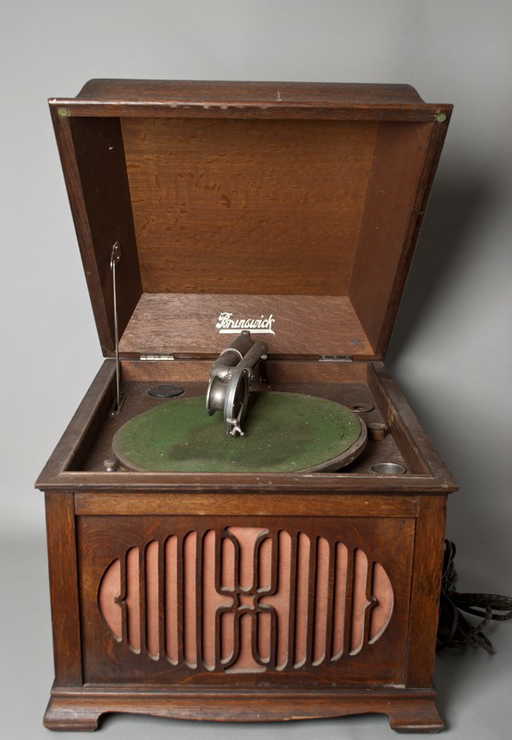This factor is pretty straightforward when it comes to vinyl records value; records that sold well and are quite common are going to be less valuable than records that sold poorly or are hard to find. A lot of albums sold in the 1970s and early 1980s sold millions of copies when new, and as such, it isn’t difficult to find copies in nice. Brunswick phonograph - Value??? By Robert Fulm » Wed, 15 Nov 1995 04:00:00. About ten years ago, I inherited a Brunswick Panatrope phonograph.
In Roll Back The Years, Edward Moogk (National Library of Canada, 1975) p.62 mentioned:
Roll Back The Years, Edward Moogk (National Library of Canada, 1975) p.62 mentioned:'There was no letup in the flood of new companies during 1917, and Toronto continued as the phonograph distribution capital. That year marked the debut in Canada of one of the great names in the industry. The Brunswick-Balke-Collender Company of Canada Limited opened a large factory and introduced the Brunswick phonograph ('not as an interesting mechanical achievement, but as a musical instrument') at the Canadian National Exhibition in its 'All Phonographs in One' exhibit, where a million visitors were reported to have looked over the new entry. Although most of its plant was geared to manufacturing phonographs, the company announced that records would soon be on the way. Brunswick's first distributor was the Musical Merchandise Sales Co. at 80 York Street.'
(the following is image is from page 63)
This machine was for sale at an outdoor antique show May 2009, southern Ontario (photos by KW):
On the Brantola page Betty Pratt noted the following for 'Frank Stanley': 'Wayne Kelly's book, Downright Upright, p. 120 says that Stanley took over the Cecilian Piano Co. in 1922, but then went out of business two years later when Mason & Risch bought out their stock. I have an address for Stanley Piano factory at 121-135 De Grassi St., and store at 14 Temperance St., Toronto on an illustrated pamphlet.
 Another letterhead from Frank Stanley Oct. 1920, says they are agents for Brunswick Phonographs and Records at 241 Yonge St. '
Another letterhead from Frank Stanley Oct. 1920, says they are agents for Brunswick Phonographs and Records at 241 Yonge St. 'The phonograph was invented by Thomas Alva Edison in Menlo Park, New Jersey in 1877. Edison, who lost most of his hearing as a child, had an ongoing interest in sound transmission and recording for his entire life. He invented a system in which sound vibrations could be captured and transferred to an embossing point. The vibrations were then impressed on to a piece of tin foil wrapped around a cylinder, which could be used to play back the sound. Edison was awarded a patent for his invention in 1878.
After several improvements and shakeups in the industry, the phonograph became a mass- marketable entertainment device available to the public. Early phonographs played cylinders, which had good quality sound but a limited playback length. When the disc record was invented, Edison's competitors adapted their phonographs to play this type of recording. Edison opposed records at first due to their poorer sound quality, but caved in to public demand in 1913 and also adapted his phonograph to play records.
Early phonographs operated by a crank and had large horns for speakers. In the '30s, vinyl records were produced, and after World War II, the long-playing record was introduced, helping to grow the popularity of the phonograph. The all-transistor portable phonograph known as the record player remained popular into the '90s, and records are still produced by some popular artists today.
Brunswick Phonograph Models
Brunswick York Phonograph
Quick Facts
Brunswick Phonograph Model Numbers
- The technology that Edison used to invent the phonograph also made sound in movies possible
- The Victor Talking Machine company produced phonographs with the brand name Victrola. These phonographs had an inner horn. They were large and encased in finished wood so that the Victrola was like a piece of furniture
- The highest price ever paid for an antique phonograph was $40,000 for an Edison Spectacle machine, one of the rarest phonographs



